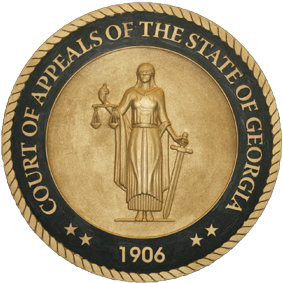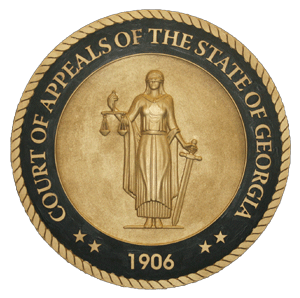A. CASES THAT ARE DIRECTLY APPEALABLE
The types of cases that may be appealed directly are set out in OCGA § 5-6-34 (a) (Attachment F), which provides as follows: Appeals may be taken to the Supreme Court and the Court of Appeals from the following judgments and rulings of the superior courts, the Georgia State-wide Business Court, the constitutional city courts, and such other courts or tribunals from which appeals are authorized by the Constitution and laws of this state:
- All final judgments, that is to say, where the case is no longer pending in the court below, except as provided in Code Section 5-6-35 [cases requiring an application for discretionary appeal];
- All judgments involving applications for discharge in bail trover and contempt cases;
- All judgments or orders directing that an accounting be had;
- All judgments or orders granting or refusing applications for receivers or for interlocutory or final injunctions;
- All judgments or orders granting or refusing applications for attachment against fraudulent debtors;
- Any ruling on a motion which would be dispositive if granted with respect to a [criminal] defense that the action is barred by Code Section 16-11-173 [regarding weapons regulations and licensing];
- All judgments or orders granting or refusing mandamus or any other extraordinary remedy, except with respect to temporary restraining orders;
- All judgments or orders refusing applications for dissolution of corporations created by the superior courts;
- All judgments or orders sustaining motions to dismiss a warning to the probate of a will;
- All judgments or orders entered pursuant to subsection (c) of Code Section 17-10-6.2 [regarding punishment for sexual offenses];
- All judgments or orders in child custody cases awarding, refusing to change, or modifying child custody or holding or declining to hold persons in contempt of such child custody judgment or orders;
- All judgments or orders entered pursuant to Code Section 35-3-37 [regarding review of someone’s criminal record information]; and
- All judgments or orders entered pursuant to Code Section 9-11-11.1 [regarding dismissal of a complaint allegedly brought to inhibit freedom of speech].
If a party files an application when the party should have filed a direct appeal, the application will be granted and the party may file a notice of appeal (in the trial court) within 10 days of the date of the order granting the application. See OCGA § 5-6-35 (j), which is the statute that provides this relief when an application for discretionary appeal is filed, and Spivey v. Hembree, 268 Ga. App. 485, 486, n. 1 (602 SE2d 246) (2004), which is the decision that provides this relief when an application for interlocutory appeal is filed.
B. FILING THE NOTICE OF APPEAL IN A DIRECT APPEAL
The notice of appeal is filed with the clerk of the trial court where the judgment or order being appealed from was entered. It is not filed with the Court of Appeals.
Generally, the notice of appeal must be filed within 30 days of the entry of the order or judgment that is being appealed. OCGA § 5-6-38. Generally, to appeal a dispossessory order, the notice of appeal must be filed within 7 days of the entry of the order. OCGA § 44-7-56.
The entry date of the order or judgment is the date the order or judgment was filed and clocked in by the trial court clerk (this may be different from the date in the judge’s signature line).
Under OCGA § 5-6-37 and Rules 2 and 6, the notice of appeal filed with the trial court must contain:
- The title and lower court docket number of the case;
- The name, complete address, telephone number, and e-mail address (if any) of the appellant, or the name, address, e-mail address, and bar number of appellant’s attorney, if any;
- A short description of the judgment/order/ruling the appellant wants to appeal (it also is helpful to include the date of the judgment),
- The name of the court appealed to (the Court of Appeals of Georgia or the Supreme Court of Georgia);
- A designation (identification) of what portions of the record are to be omitted from (left out of) the trial court record on appeal, if any;
- Whether or not transcripts of trials or hearings will be included;
- A short statement of why the Court of Appeals has jurisdiction rather than the Supreme Court; and
- A brief statement of the offense and the sentence if the appeal is from a judgment of conviction in a criminal case.14
- The notice of appeal must include a proper certificate of service. The certificate of service must state that the opposing party or attorney was served with a copy either by U.S. Mail, electronically, or in person, and must contain the complete addresses of all opposing parties or attorneys. Without these complete addresses, the Court will be unable to send the docketing notices, and it will return the notice of appeal and record to the trial court. The notice must also say that the other side agrees to accept service electronically, if that is the method used. See Rule 6.
The notice of appeal must also be signed by the appellant if self-represented, or by the attorney, if any, and must include the appellant’s complete address and telephone number. If the appellant requests a transcript, he or she must communicate with the lower court clerk and court reporter to handle the preparation and filing of that transcript. See Rule 17. Typically, the appellant must pay the cost of preparing the transcript to the lower court clerk.
C. BRIEFS
1. The Appellant’s Brief
As the appellant, you make your argument in your written brief. The brief explains what judgments or orders are being appealed, why the trial court made a legal mistake in making those judgments or orders, and what the appellant wants the Court of Appeals to do if it agrees that the trial court made a mistake. See Rule 25 (a).
The appellant must file a brief – one original only (no copies) – with the Court of Appeals within 20 days of the docketing date, which is included in the docketing notice the Court sends you. If you don’t file a timely brief, the Court will likely dismiss your appeal and possibly hold you in contempt of court. You must file a brief in each case that is docketed, even if multiple appeals relate to the same lower court case. See Rule 23 (a).
The brief must follow the rules of the Court of Appeals and be served via U.S. Mail, in person, or electronically with agreement upon opposing counsel or parties. See Rule 6. A proper certificate of service must be attached to the brief or the brief will be rejected by the Court and returned to the party. A returned brief does not toll (delay or extend) the time for submitting a brief.
The appellant may use only the information in the appellate record and transcripts to prepare the statement of facts. For every statement of fact there should be a citation or reference to a page in the record or transcript that supports that factual statement. See Rule 25 (a). Do not attach documents or exhibits to the brief, or the Court will reject it and send it back. See Rule 24 (g).
Self-represented parties may file either a paper copy or an e-filed copy of their briefs. Paper briefs are limited to 30 pages in civil cases and 50 pages in criminal cases. E-filed briefs are limited to 8,400 words in civil cases and 14,000 words in criminal cases and require a statement certifying that the word count is within the limit. Tables of contents, tables of citations, cover sheets, and certificates of service and of compliance with the word count limit do not count toward the page or word count limit. See Rule 24.
The appellant’s brief should contain the following information (see Rules 24 and 25, Form 3):
- Part One of the main text addresses the facts of the dispute and should include a statement of the proceedings in the trial court, the relevant facts of the case with citations to the record or transcript, and the method by which each listed error was preserved (that is, raised and ruled on) in the trial court for consideration on appeal;
- Part Two contains the enumerations (listing) of the errors made by the trial court;
- Part Three contains the applicable standard of review, the argument for why the trial court was wrong, and citations to cases, statutes, and other legal authorities supporting the argument and appropriate standard of review; and
- A dated, signed certificate of service stating that the appellant served the opposing parties with a copy of the brief either by U.S. mail, in person, or by electronic service with permission, and which includes the other side’s complete address. See Rule 6.
For an additional checklist for the appellant’s brief and a sample appellant’s brief, see Attachment A and Form 3 at the end of this guide.
2. The Appellee’s Brief
The appellee has 40 days from the docketing date or 20 days after the appellant’s brief is filed, whichever is later, to file his or her brief. Only the State in a criminal case is required to file an appellee’s brief. The appellee must file one original of this brief for each appeal. See Rule 23 (b), Form 4.
The appellee’s brief responds to the issues raised by the appellant, showing why the appellant’s arguments are incorrect and providing support for the trial court’s decision. If the appellee does not agree with the appellant’s statement of facts, he or she should include the facts important to the case, and cite to the record or transcripts. The appellee’s brief has the same page and word count limitations as the appellant’s brief. See Rule 24 (f).
The appellee’s brief must include (see Rules 24 and 25):
- Part One of the main text should focus on any important facts in the appellant’s brief that are wrong or incomplete, citing to the record for each fact presented. It should also include and cite to any important facts that the appellant left out, and refer to any additional parts of the record that are important;
- Part Two responds separately to each of the appellant’s enumerations of error, including citations to authorities that support the appellee’s arguments. If the appellant stated the wrong standard of review, the appellee should include the correct standard in Part Two; and
- A dated, signed certificate of service stating that the appellee served the opposing party with a copy of the brief by U.S. mail, in person, or by electronic service with permission, including the other side’s complete address. See Rule 6.
An additional checklist for the appellee’s brief and a sample appellee’s brief is included at the end of this guide. See Attachment B; Form 4.
3) The Appellant’s Reply Brief
The appellant has 20 days after the appellee filed his or her brief to file a reply brief, but reply briefs are not required. The reply brief responds to the arguments made by the appellee, showing how they do not overcome the arguments made in the appellant’s initial brief. Do not raise any new issues in the reply brief. The reply brief is limited to 15 pages for paper briefs and 4,200 words for e-filed briefs. See Rules 23 (c) and 24 (f).

